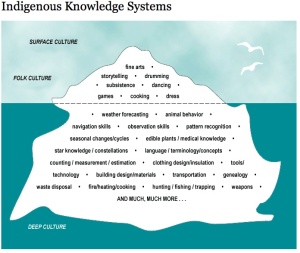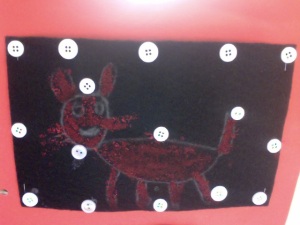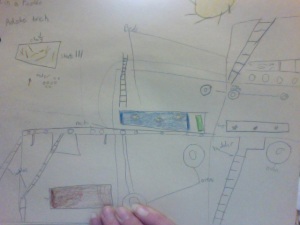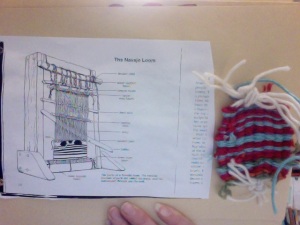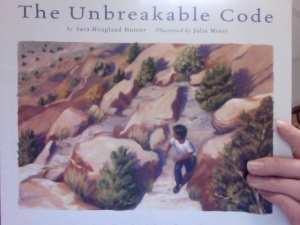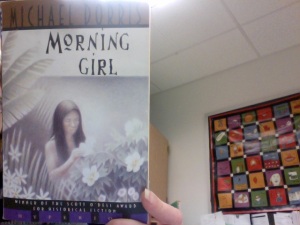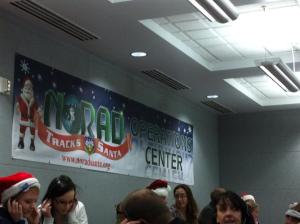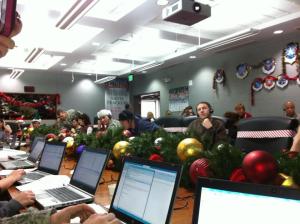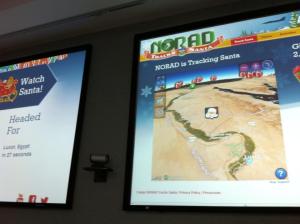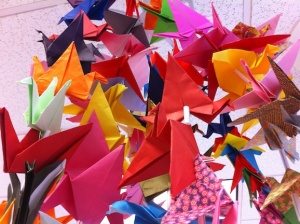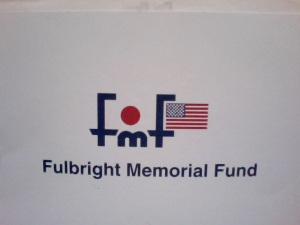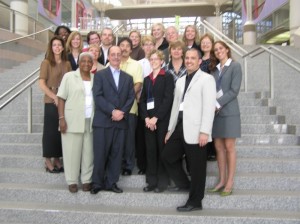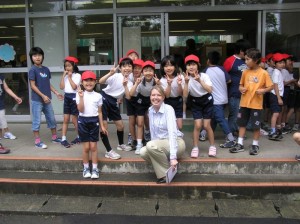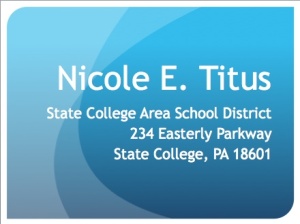Home » Social Studies
Category Archives: Social Studies
Reflections on our Native Americans Unit
We just finished our first social studies unit, Native Americans. I like to spend some time reflecting on the unit: things that went well and things that I might change the next time that I teach the unit. I wanted to make these reflections public because it is a great opportunity for families to step inside our classroom to see what we did during our social studies time.
Beringia (Land Bridge):
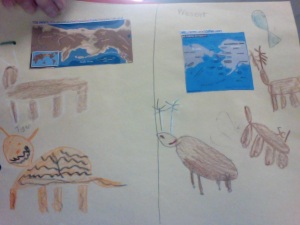
http://www.nps.gov/bela/historyculture/beringia.htm
Most of my content knowledge about Native Americans is rooted in the Northwest. I lived in Alaska for three years. Becoming a certified teacher in Alaska meant that I needed to take two special courses for certification: 3 credits in multicultural education and 3 credits in Alaskan studies. That, combined with living in the “bush”, gave me some background knowledge to begin the unit on Native Americans.
Looking back, I am glad that I made the decision to begin in the Northwest. Having that background knowledge and depth of content gave me the language and experience to get the students “hooked” into this unit. It also made sense to begin by answering the question: How did the Native Americans get here? (This, I believe is an important question to consider given that our next unit is about Explorers.) As we talked through the different regions of North America, the flow and sequence felt right because we could find connections from different regions and discuss how some of those connections could be traced back to the idea of how many Native Americans entered into North America.
This iceberg chart was a staple in my studies and indigenous curriculum in Alaska. I tried to incorporate it as best as I could throughout the unit on Native Americans to show a complete picture of Native American groups. It was easiest for me to do with the Northwest tribes.
Northwest:
In the Northwest we talked about homes, the use of natural resources–especially salmon, food preparation, cultural aspects (button blankets, totem poles).
Southwest:
We really focused on the Navajo of the Southwest. We created our own mini-samples of Navajo weavings, created clay pottery (uses of the earth), homes, and natural resources.
Plains:
In the Plains we talked about the idea of being nomadic, the buffalo, homes, and Crazy Horse. The story about Crazy Horse was inspiring, and students should know about the monument and vision being built in his honor. (Ironically, it is very close in proximity to Mount Rushmore.)
http://crazyhorsememorial.org/
Eastern Woodlands:
The Eastern Woodlands focused on natural resources and homes. (We did not have as much time to focus on this region, but I am hopeful that we will return to some of these ideas when we teach Pennsylvania.)
Legends:
This is an aspect of the unit that married well with reading. We read numerous legends from each region as a way to learn more about the people and their culture. We came to identify common elements in legends: hero, mythical qualities, cultural aspects, elements of truth, and a meaning to the story (something that we should learn). Some of the legends (a sample list) of the legends we read included:
*The Raven
*Gift of the Sacred Dog
*Clamshell Boy
*Ka’ha’si and the Loon
*Legend of the Indian Paintbrush
*Turquoise Boy
It was great to see how students made connections between various legends. As part of each region, students had to select a legend to analyze the components and record in their reader’s notebook. They were great activities for teaching text-to-text connections, story structure, and character traits.
Research:
Throughout this unit, students would conduct research each time we entered a new region. They read non-fiction material to identify and record pertinent information about that region. This was great practice for learning how to capture important notes/points and how to put things into your own words. Students learned how to utilize the structure of non-fiction books in order to locate information more easily.
2 sides to every story:
I felt that it was important to present some heavy issues during our unit on Native Americans. It was important to break stereotypes and share the complexity of issues that face Americans…especially present day. We captured this through various activities. We shared how the goal is not striving for right or wrong answers–rather the goal is seeking to understand multiple points of views in order to have a deeper understanding of issues facing Native Americans. We began in the Northwest with the Pebble Mine project. Students read a very kid-friendly article about the pros and cons of moving forward for this project. Students learned to read critically: reading an article multiple times for multiple purposes. In case you would like to know more about the project, here is a link (I did not share this link with the class.) http://apecsec.org/pebble-mine-pros-and-cons/
In the Southwest, we talked about the Navajo Codetalkers. The timing of that lesson was right around Veteran’s Day…making it such a relevant connection. Students really connected with that lesson and got emotional. We listened to this audio only of this video (https://www.youtube.com/watch?v=YZuOiqo1glk)–we listened for some of the key points that connected back to this speech given by President Bush (https://www.youtube.com/watch?v=2JPIeyBPum0).
We focused on the life of Crazy Horse in the Plains and we discuss the Trail of Tears for the Eastern Woodlands/Plains.
Students made fry bread and we discussed how it is such an important cultural symbol for Native Americans as well as the nutritional concerns related to this food. http://www.smithsonianmag.com/arts-culture/frybread-79191/?no-ist
(I did not share this article with the students, but I did present both sides of the story concerning the issues surrounding fry bread.)
Culmination:
We culminated this unit by having students read various articles to learn how Native Americans contributed to the lives of people in North America and around. Students LOVED learning how things today such as chocolate, peanuts, corn, potatoes, tug-of-war, lacrosse, popcorn, toothbrushes,….and SOOOO much more are rooted with Native Americans. I am proud that we spent time discussing these important contributions. Next time I teach this unit, I need to make sure that this is integrated throughout the unit and not highlighted solely at the end of it.
Read-aloud:
We ended this unit with the read-aloud, Morning Girl. This was a perfect way to culminate the unit and propel us into the unit on explorers. Michael Dorris shares a story about a Taino brother and sister growing up on a Bahamian island in 1492. The story captures the realities of life between siblings. It was a great way for our class to make connections with the book and get invested with the characters. (Our reading focus for this book was looking and analyzing the two main characters.) The last couple of pages of the book describes Christopher Columbus’s encounter—yet, it is only in the epilogue that we hear Columbus’s voice through a brief journal entry. For our students, hearing Columbus’s voice, and how he planned to make some of the Taino his servants provided enough intrigue for students to ask why he would write that. Those questions are answered in our next unit, explorers.
Teaching Geography through NORAD Tracks Santa
I had a “come full circle” experience a couple of years ago. As a child, I would watch the evening news to see where Santa was delivering packages on Christmas Eve. In 2012 and 2013, I was an official Santa Tracker as part of NORAD’s mission: NORAD Tracks Santa.
I decided to share this experience because this year many students in my classroom are asking questions about Santa. I share my experience with them as a way to answer their wonderings.
To learn more about the history of NORAD Tracks Santa or to explore their site, you can visit the webpage:
In 2012, I was helping to answer more than 6,000 phone calls a minute! In 2013, I was answering emails. My favorite memory was answering a call from a woman in England who was inquiring about Santa’s location. It wasn’t too much longer until he was arriving in Europe so I shared that her children should hurry up and get to bed. She answered, “Oh I don’t have any children! I just love to follow this myself!” 🙂 My favorite email exchange was from a military family in Oman. It was a great opportunity to say thank you for your service.
From a teacher’s standpoint, this is a great way to teach geography at this time of year! There are Santa cams set up around the world that showcase Santa flying past iconic symbols such as the Taj Mahal, Great Pyramids, and Eiffel Tower. It shows Santa’s current location as well as where he is headed next. When I think about our upcoming unit on Explorers–this could be a fun way for families to have children become more familiar with the countries around our world!
Paper Crane Project
Dear Class,
Having taught Sadako and the Thousand Paper Cranes in the past, I had a feeling that some of you were going to be interested in continuing to make origami cranes after we finished the book. I didn’t really expect the magnitude of having paper cranes cover our classroom. Look around the room this afternoon. Isn’t it amazing to see what you have accomplished?
In the older grades, teachers sometimes assign a year-end or final project. We didn’t do that—but you did. You created the project and assigned yourselves to complete it. I couldn’t think of a more perfect way to culminate the school year.
Did any of you pick up on the deeper meaning when I asked, “Isn’t it amazing to see what you have accomplished?” What you did was so much more than make paper cranes to hang in a classroom. Your parents and teachers want so much for you—to see you grow in so many ways. I am not sure if you remember the fall goal-setting conference we had with your families. Yes, all of us wanted to see you excel in reading, writing, and math. But do you know what? Many of your families also shared goals such as learning perseverance, learning how to deal with conflicts, learning how to make more friends, finding ways to increase your confidence. We worked hard in all of the subject areas (reading, writing, math, social studies, science) this year, but we were also working on a “hidden curriculum” (that is a fancy word that teachers sometimes like to use).
Our lessons in this “hidden curriculum” were practiced in the mornings before school actually started. We taught these lessons during morning meetings and Friday class meetings. When you began this paper crane project, we saw how you were doing many of the lessons that we worked on throughout the school year. I want to share with you just a few of the observations I noticed over the last few weeks.
Thinking beyond yourself- Do you remember how this idea started? It was an indoor recess day, and a couple of you said, “Why don’t we make paper cranes for one of our classmates?” You have truly warmed my heart by the amount of time that you have invested for one of your friends. How has that made you feel to be able to do something so significant for another friend? Please remember that feeling always.
Student voice/student ideas-This project didn’t make it into the Big Idea Jar. It wasn’t the teachers’ idea. This was truly your project. You created the idea. You invested the time to do it. You recruited more materials when you needed them. You own this idea and project. We hope that you learned this year that your voice matters. You have excellent ideas to contribute. You can make a difference! You should be so proud of yourselves.
Perseverance– That is a fancy word, isn’t it? It means sticking with something even when it gets difficult. Making 1,000 paper cranes is very time consuming! Many of you continued to keep working on the paper cranes in the morning, at lunch, at recess, and at home over the duration of a few weeks. There are going to be many times in life when we have to push through on an activity, project, something happening in our life when we think that it would be easier to just give up. Giving up is an easy thing to do. But life often isn’t easy, and we have to find ways to push ourselves through those tough times. Look back and remember what your classmates did in these final weeks of school and think, “I can get through this too.”
Teamwork- There will be times when you need a little bit of extra help to get through some of those tough times. I hope that you realized how much your teachers, families, and classmates were here for you during the course of the year. Great things can be accomplished when people work together. Just look at our classroom! It certainly wouldn’t look this way if only one person was doing all the work.
Parental involvement– Speaking of teamwork, I hope you noticed and appreciated the parents that came in to help thread our paper cranes. Also, other family members supported you by sending in more origami paper—some of this paper arrived all the way from California! What is important for you to remember about this is that you have families that believe in you and support you. It has been such a great year to get to know you and your families.
Support and self confidence- It’s fair to say that some students really ran with this project while other students dabbled here and there. What I appreciated so much was how we all supported each other in various ways. Silent encouragement is so much more powerful than put-downs. I never heard anyone throughout this whole process say anything unkind about what others were doing. That is so important to share. We have to be so careful about our words, don’t we? Words can either build us up or tear us down. You have been building each other up throughout this whole project. It was so much fun to see you come in the morning and share the tiniest cranes that you have made, or cranes made from cardboard and other materials. You were anxious to share, and we were anxious to praise. For friends that had an interest in making cranes but didn’t know how to do it, you took the time to teach them. Thank you for taking that time to reach out to a friend.
As I write this letter, you have a teacher that is just beaming. I am so proud of what you accomplished this year—both academically and through the “hidden curriculum.” Yes, you aced this final project, but I’m not assigning a grade!!!! Aren’t many things more important than the grade? It seems more about the process of life-long learning. Thank you for a wonderful year!
Hugs,
Mrs. Titus
Japan Fulbright Memorial Fund Teacher Program
When I found out that I would be teaching in this school district, I knew that there was a social studies unit on Japan. Secretly, I hoped that one day I would be able to teach that unit. Several years ago, I was fortunate to be a part of a teacher delegation from the United States that traveled to Japan as part of the Fulbright Memorial Fund. Unfortunately, the program has disbanded, but I thought that I would provide some background information about the program. To this day, it has been one of the greatest personal and professional highlights of my life.
The Japan Fulbright Memorial Fund (JFMF) Teacher Program allowed primary and secondary school educators in the U.S. to travel to Japan for three weeks in an effort to promote greater intercultural understanding between the two nations. The belief was that peace and greater understanding comes through education.
Participating educators began their visit in Tokyo with a practical orientation on Japanese life and culture and met with Japanese government officials and educators. We traveled to selected host cities outside of Tokyo where we had direct contact with Japanese teachers and students during visits to primary and secondary schools as well as a teacher’s college. We visited cultural sites and local industries in addition to a brief home stay with a Japanese family.
The Japan Fulbright Memorial Fund, based in Tokyo, oversaw all aspects of the Teacher Program. The program was sponsored by the Government of Japan and was launched in 1997 to commemorate the 50th anniversary of the U.S. government Fulbright Program, which enabled more than 6,000 Japanese citizens to study in the U.S. on Fulbright fellowships for graduate education and research. The Institute of International Education acted as the agency for the Japan Fulbright Memorial Fund to coordinate the recruitment and pre-departure activities of the Teacher Program in the United States.
More than 4,600 primary and secondary educators visited Japan through the JFMF Teacher Program. Upon their return, program participants shared what they have learned about Japan with their students and communities through a variety of outreach projects.
I look forward to sharing many stories with you as our unit on Japan continues to unfold. 🙂
For more information on the program, visit: http://www.iie.org/en/Programs/JFMF
Meishi
We are getting ready to kick-off our unit for Japan. In preparation for our “trip,” the students will be creating business cards called meishi. In preparing for my own travels to Japan a few years ago, I discovered that there is a whole protocol for exchanging meishi with another person. First, meishi is considered an extension of yourself that you are sharing with another person. There is a ritual for exchanging meishi with another person. You accept the card from someone by holding it in the two bottom corners. You take a moment to study the card looking at the front and back of it. Then, depending on the age and position of the person, you bow to each other. Finally, you place the meishi in a special holder designed for business cards—-never in a back pocket.
We will be practicing this ritual in class after the students create their own meishi using google presentation.
As part of a teacher delegation traveling to Japan, we also had the opportunity to visit several schools. It is fun to share another story of our experience with meishi while visiting the Japanese schools. In the United States, students like to collect baseball cards or other types of game/sports cards. While we were visiting the schools, students would come up to us and say “meishi, meishi.” They were collecting the teachers’ cards like students here collect sports cards. It left such an impression on me that I knew I had to expose our students to this aspect of Japanese culture as one of the first things of our unit.
Importance of an Afrocentric, Multicultural Curriculum
Vann, K. R., & Kunjufu, J. (????). The importance of an Afrocentric, multicultural curriculum. Kappan.
P 490: A strictly Eurocentric perspective will not properly prepare students for a successful future in a multicultural world.
P 490: Was America discovered by Columbus, or was it invaded? Is Thanksgiving a day to give thanks or a day of sadness for Native Americans? Why should African-Americans celebrate the Fourth of July? The answers to these questions probably vary depending on the person you ask.
P 490: The Fourth of July is a holiday that commemorates America’s freedom from British domination. When America’s first Independence Day was celebrated in 1776, African-Americans were not independent; they were not even citizens; they were slaves.
P 490: These issues clearly illustrate the need for an Afrocentric, multicultural curriculum. Whether the subject is history, science, or literature, the experiences of all cultures involved must be equally recognized and legitimized. Such a curriculum would embrace the perspectives of many cultures.
P 490: Everyone is now taught about the great civilizations of Rome and Greece, but how many people learn about the mighty empires of Ethiopia and Ghana? People learn about Thomas Edison and the light bulb, but what about Benjamin Banneker, one of America’s first black intellectuals, who invented a wooden clock that kept accurate time?
P 491: The Eurocentric frame of reference needs to change…traditionally, in textbooks the African-American history begins with American slavery, instead of with the genesis of civilizations in Africa. What happens is that African-Americans are considered as descendents only of slaves, not of kings and queens. Perhaps one page of a textbook discusses the civil rights movement, perhaps one paragraph summarizes the life and works of Dr. Martin Luther King, Jr. When you think about the volumes of material that students read in school it tends to revolve around Americans of European descent…think Aristotle, Thomas Jefferson, Jonas Salk. The subtle (or not so subtle message) becomes that white students see themselves as descendents of superior achievers.
P 491: Schools are powerful institutions that have the ability to dispel these myths. Students internalize what they are taught. What is taught can have a profound impact on the confidence and self-esteem of children. An Afrocentric, multicultural curriculum is a major step toward addressing these vital issues.
P 491: All students would benefit from an Afrocentric, multicultural curriculum. White students would learn that all cultures have made outstanding contributions throughout the world by means of innovation, creativity, hard work, and suffering. African-American students would finally inherit a legacy of excellence and develop confidence, knowing that they too are capable of achieving greatness. Our society today is multicultural. We must, therefore, foster a greater awareness, appreciation, and acknowledgment of the achievements of the many instead of the few.

